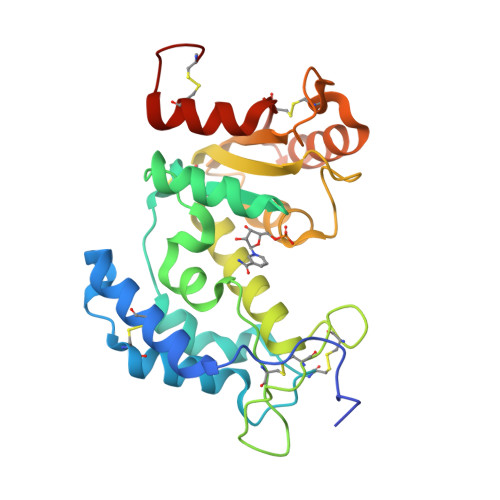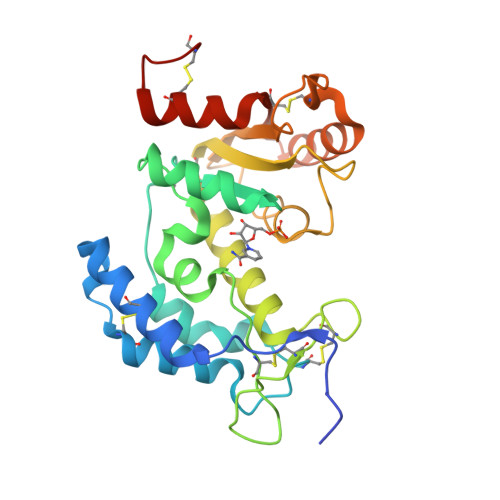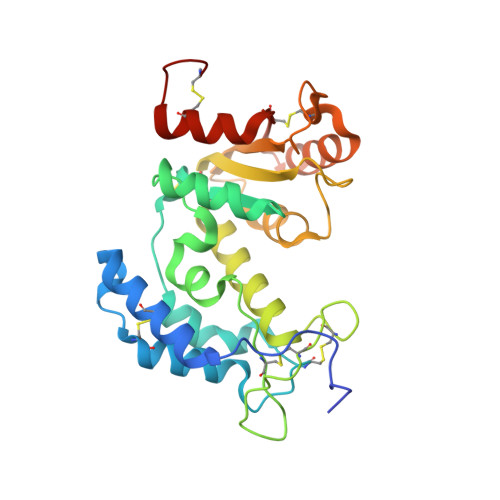Acidic residues at the active sites of CD38 and ADP-ribosyl cyclase determine nicotinic acid adenine dinucleotide phosphate (NAADP) synthesis and hydrolysis activities.
Graeff, R., Liu, Q., Kriksunov, I.A., Hao, Q., Lee, H.C.(2006) J Biological Chem 281: 28951-28957
- PubMed: 16861223
- DOI: https://doi.org/10.1074/jbc.M604370200
- Primary Citation of Related Structures:
2HCT - PubMed Abstract:
Nicotinic acid adenine dinucleotide phosphate (NAADP) is a novel metabolite of NADP that has now been established as a Ca(2+) messenger in many cellular systems. Its synthesis is catalyzed by multifunctional enzymes, CD38 and ADP-ribosyl cyclase (cyclase). The degradation pathway for NAADP is unknown and no enzyme that can specifically hydrolyze it has yet been identified. Here we show that CD38 can, in fact, hydrolyze NAADP to ADP-ribose 2'-phosphate. This activity was low at neutrality but greatly increased at acidic pH. This novel pH dependence suggests that the hydrolysis is determined by acidic residues at the active site. X-ray crystallography of the complex of CD38 with one of its substrates, NMN, showed that the nicotinamide moiety was in close contact with Glu(146) at 3.27 A and Asp(155) at 2.52 A. Changing Glu(146) to uncharged Gly and Ala, and Asp(155) to Gln and Asn, by site-directed mutagenesis indeed eliminated the strong pH dependence. Changing Asp(155) to Glu, in contrast, preserved the dependence. The specificity of the two acidic residues was further demonstrated by changing the adjacent Asp(147) to Val, which had minimal effect on the pH dependence. Crystallography confirmed that Asp(147) was situated and directed away from the bound substrate. Synthesis of NAADP catalyzed by CD38 is known to have strong preference for acidic pH, suggesting that Glu(146) and Asp(155) are also critical determinants. This was shown to be case by mutagensis. Likewise, using similar approaches, Glu(98) of the cyclase, which is equivalent to Glu(146) in CD38, was found to be responsible for controlling the pH dependence of NAADP synthesis by the cyclase. Based on these findings, a catalytic model is proposed.
Organizational Affiliation:
Department of Pharmacology, University of Minnesota, Minneapolis, Minnesota 55455, USA.




















